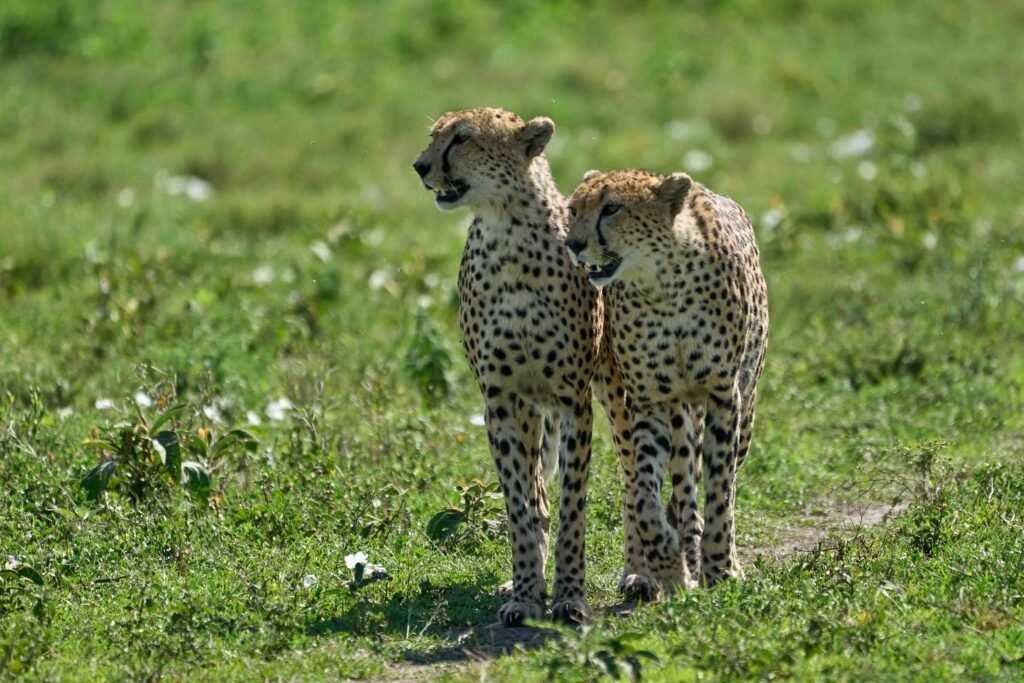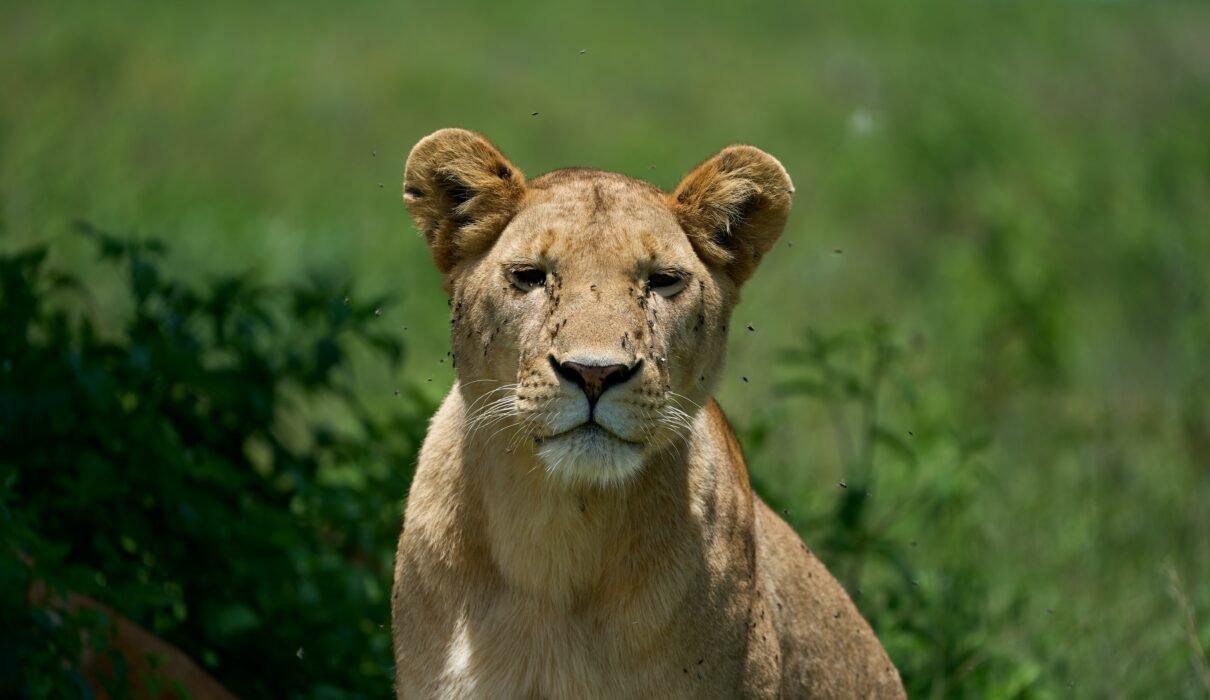Best Time to Visit Ngorongoro Crater. The Ngorongoro Crater, a UNESCO World Heritage Site, is one of Tanzania’s most spectacular natural wonders. Known for its abundant wildlife, breathtaking scenery, and unique ecosystem, the crater offers visitors an unforgettable safari experience. However, when planning a trip to Ngorongoro, it’s crucial to consider the best time to visit. This guide will help you determine when to go for optimal wildlife viewing, pleasant weather, and unique seasonal highlights.
Learn more about planning your trip to Ngorongoro Crater.

Best Time to Visit Ngorongoro Crater – Overview: Why Timing Matters for Your Ngorongoro Safari
Timing your visit to Ngorongoro Crater is important for getting the most out of your safari. The crater’s enclosed nature means wildlife can be seen year-round, but certain times of the year are better for specific activities, such as witnessing the Great Migration or enjoying the best weather conditions.
- Year-Round Wildlife: Ngorongoro has permanent water sources, so animals remain within the crater year-round.
- Best Wildlife Viewing: Peak seasons offer better chances to spot large concentrations of animals.
Get more information about Ngorongoro’s year-round wildlife.
Best Time to Visit Ngorongoro Crater – The Best Time for Wildlife Viewing: June to October
The dry season, from June to October, is the best time to visit Ngorongoro Crater for wildlife viewing. During these months, the grass is shorter, making it easier to spot animals such as lions, elephants, and rhinos. The cooler, dry weather also ensures comfortable safari conditions, with minimal rain and clearer skies.
- Advantages: Dry season leads to better wildlife visibility, as animals gather around water sources.
- Temperature: Days are warm, but nights can be chilly in the crater, so bring layers.
Explore why the dry season is ideal for safaris.
Best Time to Visit Ngorongoro Crater – The Green Season: November to May
From November to May, Ngorongoro Crater experiences its rainy season, with the heaviest rains occurring from March to May. While the wet season may deter some visitors, it’s a fantastic time for those looking to experience the crater’s lush, green landscapes and lower tourist numbers.
- Advantages: Lush scenery, fewer tourists, and excellent birdwatching.
- Challenges: Rain can make roads muddy, but the crater’s wildlife is still easy to spot.
Discover more about the green season in Ngorongoro.
Best Time to Visit Ngorongoro Crater – Great Migration Calving Season: January to March
One of the most incredible events to witness in Ngorongoro Crater is the Great Migration calving season, which typically takes place from January to March. During this time, thousands of wildebeest and zebras give birth to their young on the nearby Ndutu plains, offering unparalleled opportunities to witness predator-prey interactions.
- Highlights: See newborn wildebeest and zebras and the predators that follow them.
- Best Viewing Areas: The Ndutu region, which borders the crater, is an ideal location to witness this event.
Learn more about the Great Migration and its calving season.

5. Weather Conditions in Ngorongoro Crater
Ngorongoro’s climate varies depending on the season. The crater experiences two main seasons: the dry season (June to October) and the rainy season (November to May). Understanding the weather can help you prepare for your visit and pack accordingly.
- Dry Season (June to October): Cool temperatures, minimal rainfall, and perfect safari conditions.
- Wet Season (November to May): Expect more rain, particularly from March to May, and lush landscapes.
Read more about Ngorongoro’s climate and what to expect.
6. Best Time for Birdwatching: November to April
Bird lovers will find the wet season, from November to April, the best time to visit Ngorongoro Crater. During these months, migratory birds from Europe and Asia arrive, adding to the already diverse array of bird species. Flamingos can often be seen around Lake Magadi, located within the crater.
- Bird Species: Migratory birds, flamingos, and other wetland species.
- Why Visit: The crater is a birdwatching paradise during these months, with over 500 species recorded.
Explore more about birdwatching in Ngorongoro Crater.
7. Best Time for Photography: June to September
For photographers, the dry season from June to September is the best time to capture the beauty of Ngorongoro Crater. The clear skies and minimal rain provide perfect conditions for taking stunning landscape and wildlife photos. The golden light of early morning and late afternoon enhances the beauty of the crater’s scenery and the animals that inhabit it.
- Why It’s Ideal: Clear skies, golden lighting, and excellent visibility.
- Pro Tip: Visit early in the morning for the best light and fewer crowds.
Get more photography tips for your safari.
8. Fewer Crowds: Visit During the Rainy Season
If you prefer a more peaceful safari experience with fewer crowds, consider visiting Ngorongoro during the rainy season. While the rainy months (especially March to May) may deter some tourists, they offer a more intimate experience with the crater’s wildlife and landscapes.
- Benefits: Quieter safari experience, lower accommodation costs.
- Wildlife Viewing: Animals are still present, and the landscapes are beautifully green.
Learn more about visiting Ngorongoro during the off-peak season.
9. Planning Your Ngorongoro Safari: Key Tips
When planning your trip to Ngorongoro Crater, there are a few key things to keep in mind to ensure a smooth and memorable safari experience.
- Book Early: If you’re visiting during the dry season, especially between June and October, accommodations can fill up quickly, so it’s wise to book in advance.
- Accommodations: Options range from luxury lodges to more affordable campsites.
- Packing: Bring layers, as temperatures in the crater can be chilly, especially in the early morning.
Get more practical tips for planning your Ngorongoro safari.
10. Ngorongoro vs. Serengeti: When to Visit Both
Many travelers combine a trip to Ngorongoro Crater with a safari in the nearby Serengeti National Park. If you’re planning to visit both, it’s essential to choose the right time to experience the best of both worlds. The dry season, from June to October, is perfect for combining these two iconic destinations, offering excellent wildlife viewing and comfortable weather conditions.
- Best Combo Time: June to October, ideal for both Serengeti’s Great Migration and Ngorongoro’s wildlife viewing.
- Why Visit Both: Experience the contrasting landscapes and diverse wildlife of Tanzania’s most famous parks.
Learn more about combining a Serengeti and Ngorongoro safari.
Conclusion
Ngorongoro Crater is a year-round safari destination, but the best time to visit depends on your priorities. Whether you’re looking to witness the Great Migration, enjoy optimal wildlife viewing during the dry season, or experience the lush landscapes and fewer crowds of the rainy season, Ngorongoro offers unforgettable experiences no matter when you visit. Plan your safari carefully, and prepare for an adventure in one of Africa’s most beautiful natural wonders.
For more information on planning your Ngorongoro safari, visit Kilimanjaro Climb Specialist or Eddy Tours & Safaris.

